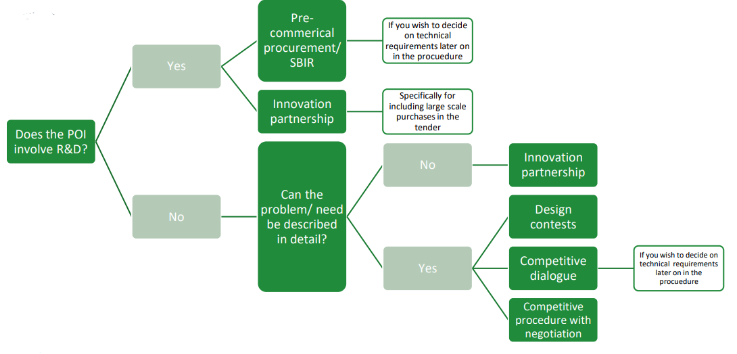PROCEDIN´s WHITE PAPER: Key Elements of Procurement of Innovation, Part 1
BUILD’s sister project, PROCEDIN, elaborated a white paper focusing on the achievement of various form of innovation through public procurement. It collects insights gathered from interviews with 15 public procurement leaders across Europe. They shed light on barriers, enablers, and strategies for successfully leading Procurement of Innovation projects. This is the first series of pills encapsulating the essence of this research.
Why to Innovate through Public Procurement?
Innovation is a driving force for the vitality of firms, providing sustainable competitive advantages and fostering positive spillover effects in communities. Public procurement, accounting for 12 % of the European Union’s GDP, emerges as a key mechanism for governments to encourage innovation, aligning with economic, environmental, and social policy objectives.
Economic Significance of Public Procurement
On average, public procurement spending in Europe is valued at 12 % of GDP, with variations among countries. The Netherlands leads with 20.2 % of GDP spent on public procurement, indicating public procurement as a pivotal tool for advancing innovation. Particularly in supporting small and medium-sized enterprises and high-tech start-ups.
What is Procurement of Innovation?
The European Commission defines procurement of innovation (POI) as the acquisition of new or significantly improved products, services, or works not currently available on the market. However, perspectives on POI vary among leaders, encompassing procedural, innovative, sustainable, and strategic views. This diversity shapes the definition of innovation itself and how it is implemented in the procurement landscape.
Exploring POI instruments
To comprehend the procurement of innovation, it is crucial to understand the instruments available. There are different formal types of public procurement, including Pre-Commercial Procurement (PCP), Innovation Partnership, Competitive Dialogue, and Competitive Procedure with Negotiation. These instruments, both with and without Research and Development, offer different approaches to driving innovation through procurement.
Decision Tree of Procurement Instruments
Navigating through the multitude of procurement instruments can be complex. A simplified decision tree is presented, aiding practitioners in distinguishing between various POI procedures. Moreover, the decision tree helps elucidate the nuances of each method, contributing to a more informed and strategic approach to innovation procurement.

Why does POI matter?
Understanding the perspectives and goals of POI practitioners is crucial. These factors shape their approach, influencing perceived barriers, enablers, and implementation strategies. This intricate interplay will be further explored in the upcoming discussions on the journeys of different cities.
Stay tuned for the follow-up article coming your way soon!

